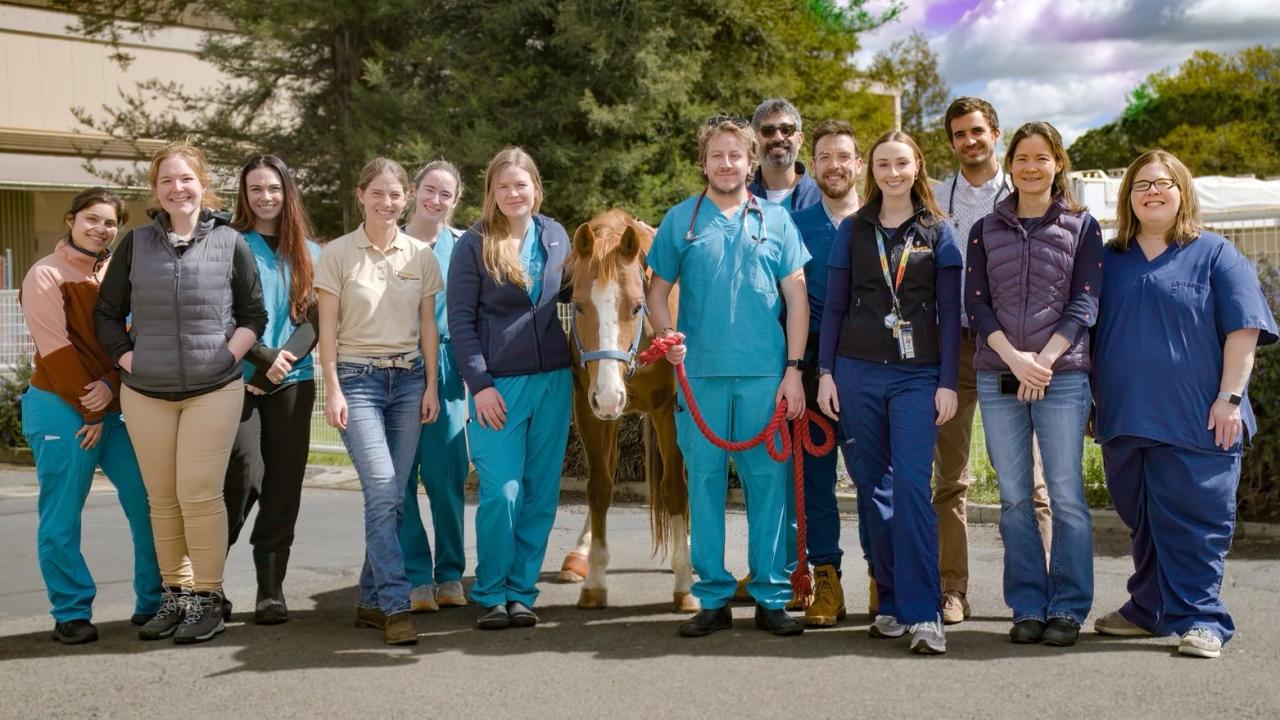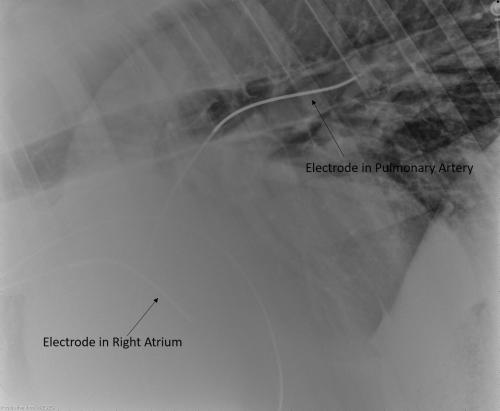
Electrical Shock Procedure Corrects Horse’s Irregular Heartbeat
Transvenous electrical cardioversion (TVEC) once again offered for horses at UC Davis after a decade of absence
“Case of the Month” – May 2023

Rio, an 8-year-old American Quarter Horse gelding, holds a special place in the hearts of Dr. Alana Alpern’s family. He primarily serves as a pleasure horse for the veterinarian’s children and was bred, born, and raised on her family’s farm in Texas. So, when Rio recently became sick, Dr. Alpern knew exactly where to take him – her alma mater, the UC Davis School of Veterinary Medicine.
Rio presented to the Large Animal Clinic at UC Davis having been diagnosed with atrial fibrillation, an irregular heart rhythm and a common equine cardiac problem. When Dr. Alpern was a student at UC Davis more than 15 years ago, the school was one of very few places in the United States performing transvenous electrical cardioversion (TVEC), a procedure that shocks the heart back into a regular rhythm. Since Dr. Alpern graduated in 2007, the school has performed only a handful of TVEC procedures, due to a lack of essential equipment over the past decade.
“It’s been a long time since we’ve performed a TVEC at UC Davis,” said Dr. Jessica Morgan of the Equine Field Service. “But I gained a lot of experience with them in my time as a clinician at the University of Pennsylvania, so we have the right team and equipment to offer that option again.”
Dr. Morgan consulted with Dr. Fiona Wensley in the Equine Medicine Service treating Rio, the Cardiology Service, and the Anesthesia Service—as well as Dr. Alpern—about the possibility of a TVEC being an option for Rio.
“Rio had previously been given the drug quinidine, a medication commonly used for cardioversion, but it failed to correct his arrhythmia,” said Dr. Morgan. “Dr. Alpern was looking for an opportunity to try something else, and we agreed that a TVEC was the answer.”
A cutaneous method—placing electrode paddles on the chest—is the preferred method of performing an electrical cardioversion on dogs (and humans), but a horse’s large muscle mass doesn’t allow the shock wave to reach the heart without causing deadly complications. Veterinarians must approach the horse’s heart with electrodes on the tips of catheters placed across the heart through the horse’s veins.

Two catheters were placed in Rio’s right jugular vein – one was advanced into the left pulmonary artery and the other into the right atrium. Their positions were placed with the assistance of echocardiography and confirmed with x-rays of his chest. Rio was then anesthetized, and a shock wave produced by a life pack was sent to the electrodes with the intention of stunning the atrium, then allowing it to restart.
The procedure was successful, and Rio’s heart was shocked back into a regular (sinus) rhythm, confirmed by a post-procedure electrocardiogram. A follow-up echocardiogram several days later revealed improvement of previous findings.
“From a cardiovascular standpoint, Rio has a good prognosis for return to athletic function, as long as he is able to maintain sinus rhythm,” said Dr. Morgan. “He didn’t have any major complications with the procedure, and he hasn’t gone back into atrial fibrillation.”
Rio was placed on medication to reduce the risk of recurrence, and Dr. Alpern has a cell phone-based electrocardiogram unit to monitor him at home.
After two months, Dr. Alpern reports that Rio is doing well and is back to giving short rides to her children. She remains optimistic about his recovery.
# # #
